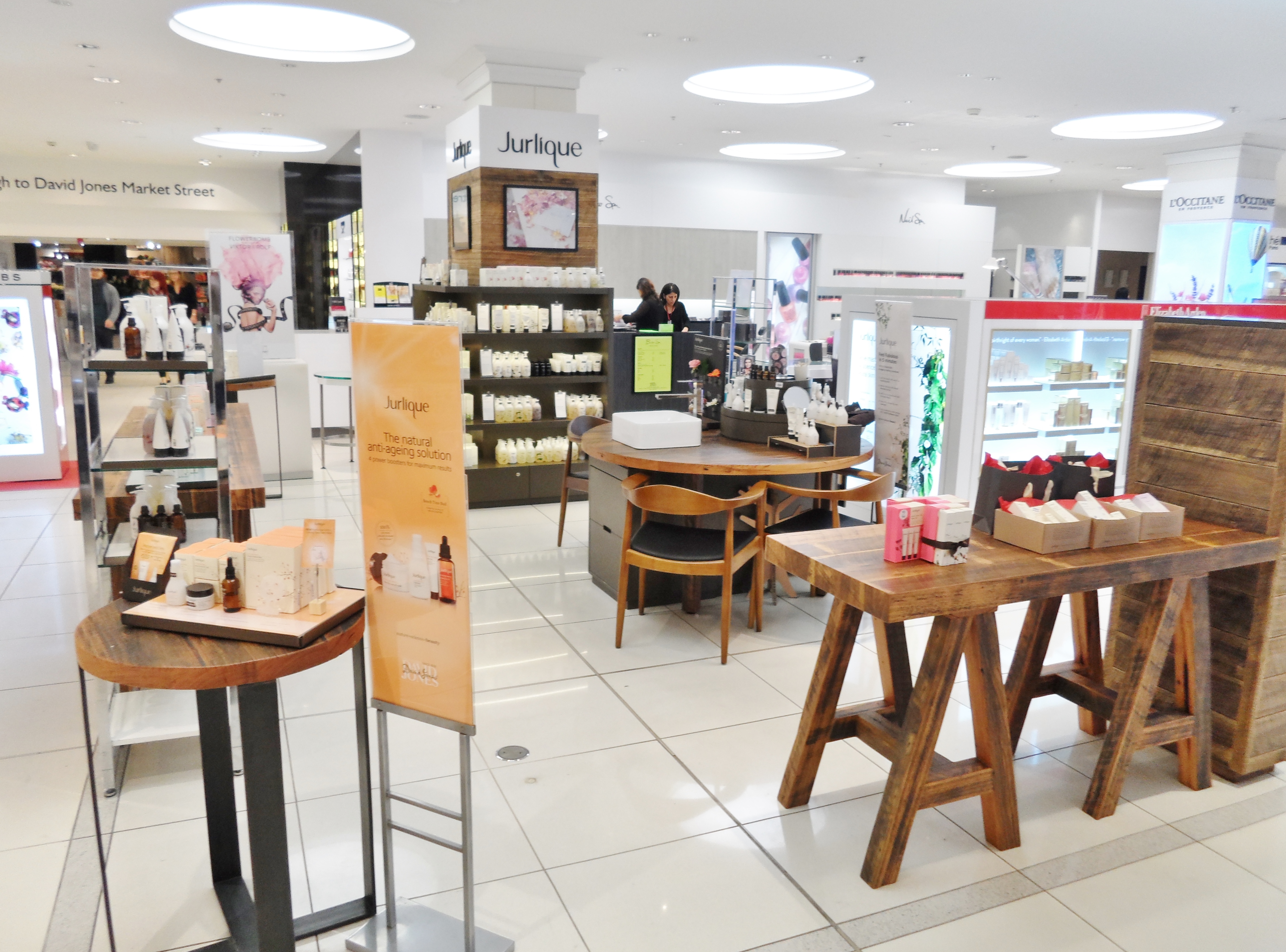|
Distribution (marketing)
Distribution is the process of making a product or service available for the consumer or business user who needs it, and a distributor is a business involved in the distribution stage of the value chain. Distribution can be done directly by the producer or service provider or by using indirect channels with distributors or intermediaries. Distribution (or place) is one of the four elements of the marketing mix: the other three elements being product, pricing, and promotion. Decisions about distribution need to be taken in line with a company's overall strategic vision and mission. Developing a coherent distribution plan is a central component of strategic planning. At the strategic level, as well as deciding whether to distribute directly or via a distribution network, there are three broad approaches to distribution, namely mass, selective and exclusive distribution. The number and type of intermediaries selected largely depends on the strategic approach. The overall distr ... [...More Info...] [...Related Items...] OR: [Wikipedia] [Google] [Baidu] |
Warehouse In New Jersey Where Trucks Deliver Granite Slabs
A warehouse is a building for storing goods. Warehouses are used by manufacturers, importers, exporters, wholesalers, transport businesses, customs, etc. They are usually large plain buildings in industrial parks on the rural–urban fringe, outskirts of cities, towns, or villages. Warehouses usually have loading docks to load and unload goods from trucks. Sometimes warehouses are designed for the loading and unloading of goods directly from railways, airports, or seaports. They often have crane (machine), cranes and Forklift truck, forklifts for moving goods, which are usually placed on International Organization for Standardization, ISO standard pallets and then loaded into pallet racking, pallet racks. Stored goods can include any raw materials, packing materials, spare parts, components, or finished goods associated with agriculture, manufacturing, and production. In India and Hong Kong, a warehouse may be referred to as a godown. There are also godowns in the Shanghai Bund. ... [...More Info...] [...Related Items...] OR: [Wikipedia] [Google] [Baidu] |
Perishability
Perishability is used in marketing to describe the way in which service capacity cannot be stored for sale in the future. It is a key concept of services marketing Services marketing is a specialized branch of marketing which emerged as a separate field of study in the early 1980s, following the recognition that the unique characteristics of Service (economics), services required different strategies compa .... Other key characteristics of services include intangibility, inseparability, fluctuating demand, pricing of services, heterogeneity and variability. References External links * Services marketing {{marketing-stub ... [...More Info...] [...Related Items...] OR: [Wikipedia] [Google] [Baidu] |
Financial Conduct Authority
The Financial Conduct Authority (FCA) is a financial regulatory body in the United Kingdom. It operates independently of the UK Government and is financed by charging fees to members of the financial services industry. The FCA regulates financial firms providing services to consumers, and maintains the integrity of the financial markets in the United Kingdom. It focuses on the regulation of conduct by both retail and wholesale financial services firms. Like its predecessor the FSA, the FCA is structured as a company limited by guarantee.Goldsworth, J., ''Lexicon of Trust & Foundation Practice'' ( Wendens Ambo: Mulberry House Press, 2016)p. 140 The FCA works alongside the Prudential Regulation Authority and the Financial Policy Committee to set regulatory requirements for the financial sector. The FCA is responsible for the conduct of around 58,000 businesses which employ 2.2 million people and contribute around £65.6 billion in annual tax revenue to the economy in the Unite ... [...More Info...] [...Related Items...] OR: [Wikipedia] [Google] [Baidu] |
Insurance Distribution Directive
This list of European Union Directives is ordered by theme to follow EU law. For a date based list, see the :European Union directives by number. From 1 January 1992 to 31 December 2014, numbers assigned by the General Secretariat of the Council followed adoption, for instance: Directive 2010/75/EU. Since 2015, acts have been numbered following the pattern (domain) YYYY/N, for instance "Regulation (EU) 2016/1627" with * domain being "EU" for the European Union, "Euratom" for the European Atomic Energy Community, "EU, Euratom" for the European Union and the European Atomic Energy Community, "CFSP" for the Common Foreign and Security Policy * year being the 4 digit year * the sequential number. Some older directives had an ordinal number in their name, for instance: "First Council Directive 73/239/EEC". Free movement and trade Goods *Commission Directive 66/683/EEC of 7 November 1966 eliminating all differences between the treatment of national products and that of products w ... [...More Info...] [...Related Items...] OR: [Wikipedia] [Google] [Baidu] |
European Union
The European Union (EU) is a supranational union, supranational political union, political and economic union of Member state of the European Union, member states that are Geography of the European Union, located primarily in Europe. The union has a total area of and an estimated population of over 449million as of 2024. The EU is often described as a ''sui generis'' political entity combining characteristics of both a federation and a confederation. Containing 5.5% of the world population in 2023, EU member states generated a nominal gross domestic product (GDP) of around €17.935 trillion in 2024, accounting for approximately one sixth of global economic output. Its cornerstone, the European Union Customs Union, Customs Union, paved the way to establishing European Single Market, an internal single market based on standardised European Union law, legal framework and legislation that applies in all member states in those matters, and only those matters, where the states ... [...More Info...] [...Related Items...] OR: [Wikipedia] [Google] [Baidu] |
Insurance
Insurance is a means of protection from financial loss in which, in exchange for a fee, a party agrees to compensate another party in the event of a certain loss, damage, or injury. It is a form of risk management, primarily used to protect against the risk of a contingent or uncertain loss. An entity which provides insurance is known as an insurer, insurance company, insurance carrier, or underwriter. A person or entity who buys insurance is known as a policyholder, while a person or entity covered under the policy is called an insured. The insurance transaction involves the policyholder assuming a guaranteed, known, and relatively small loss in the form of a payment to the insurer (a premium) in exchange for the insurer's promise to compensate the insured in the event of a covered loss. The loss may or may not be financial, but it must be reducible to financial terms. Furthermore, it usually involves something in which the insured has an insurable interest established by o ... [...More Info...] [...Related Items...] OR: [Wikipedia] [Google] [Baidu] |
Wholesale Fish Market At Haikou New Port - 14
Wholesaling or distributing is the sale of goods or merchandise to retailers; to industrial, commercial, institutional or other professional business users; or to other wholesalers (wholesale businesses) and related subordinated services. In general, it is the sale of goods in bulk to anyone, either a person or an organization, other than the end consumer of that merchandise. Wholesaling involves purchasing goods in bulk, usually directly from the manufacturer or source, at a discounted rate. Retailers then sell these goods to end consumers at a higher price, generating a profit. According to the United Nations Statistics Division, ''wholesale'' is the resale of new and used goods to retailers, to industrial, commercial, institutional or professional users, or to other wholesalers, or involves acting as an agent or broker in buying merchandise for, or selling merchandise to, such persons or companies. Wholesalers frequently physically assemble, sort, and grade goods in lar ... [...More Info...] [...Related Items...] OR: [Wikipedia] [Google] [Baidu] |
Gucci
Guccio Gucci S.p.A., doing business as Gucci ( , ), is an Italian Luxury goods, luxury fashion house based in Florence. Its product lines include handbags, ready-to-wear, footwear, accessories, and home decoration; and it licenses its name and branding to Coty Inc., Coty for fragrance and cosmetics under the name Gucci Beauty. Gucci was founded in 1921 by Guccio Gucci (1881–1953) in Florence, Tuscany. Under the direction of Aldo Gucci (son of Guccio), Gucci became a worldwide-known brand, an icon of the Italian ''Italian economic miracle, dolce vita'' period. Following family feuds during the 1980s, the Gucci family was entirely ousted from the capital of the company by 1993. After this crisis, the brand was revived and in 1999 Gucci became a subsidiary of the French conglomerate PPR, which later renamed itself to Kering. In 2024, Gucci operated 529 stores with 20,032 employees, and generated €7.65 billion in sales. Stefano Cantino has been CEO of Gucci since October 2024 ... [...More Info...] [...Related Items...] OR: [Wikipedia] [Google] [Baidu] |
Clinique
Clinique Laboratories, Limited liability company, LLC () is an American manufacturer of skincare, cosmetics, toiletries and fragrances, usually sold in high-end department stores. It is a subsidiary of the Estée Lauder Companies. As of 2019, Clinique has over 22,000 customer consultants worldwide. History In 1967, American Vogue (magazine), ''Vogue'' magazine published an article called "Can Great Skin Be Created?", written by beauty editor Carol Phillips with Norman Orentreich, discussing the significance of a skin-care routine. Evelyn Lauder, daughter-in-law of Estée Lauder, read the article and brought it to Estée's attention. Both Carol Phillips and Orentreich were recruited to help create the brand, and in April 1968, Clinique premiered as the world's first allergy tested, dermatologist-driven line at Saks Fifth Avenue in New York City, New York, US, launched with 117 products. Evelyn Lauder, an executive at Estée Lauder and member of the Lauder family, created the Cl ... [...More Info...] [...Related Items...] OR: [Wikipedia] [Google] [Baidu] |
Jurlique
Jurlique International Pty Ltd, is an Australian cosmetics manufacturer specialising in natural botanical-based skincare and cosmetics under the brand name Jurlique. Jurlique is considered ethical and environmentally friendly, although internationally, it does submit some samples for animal testing as mandated by Chinese local laws for products sold in that market. History Jurlique was founded in 1985 in South Australia by Dr Jurgen Klein and his wife Ulrike. The company's name is based on a phonetic combination of their first names. The native German couple relocated to a farm in the Adelaide Hills a year prior to the launch of their brand, due to its warm climate. Jurgen was a biochemist and naturopath, who had previously worked for German holistic skincare brand Dr. Hauschka. and Ulrike was a horticulturalist and botanist. Today the farm is still part of the company and Jurlique claims to be the number two prestige skincare brand in Australia. The brand is sold in over 5 ... [...More Info...] [...Related Items...] OR: [Wikipedia] [Google] [Baidu] |
Cafeteria
A cafeteria, called canteen outside the U.S., is a type of food service location in which there is little or no waiting staff table service, whether in a restaurant or within an institution such as a large office building or school; a school dining location is also referred to as a dining hall or lunchroom (in American English). Cafeterias are different from coffeehouses, although the English term came from the Spanish term ''cafetería'', which carries the same meaning. Instead of table service, there are food-serving counters/stalls or booths, either in a line or allowing arbitrary walking paths. Customers take the food that they desire as they walk along, placing it on a tray. In addition, there are often stations where customers order food, particularly items such as hamburgers or tacos which must be served hot and can be immediately prepared with little waiting. Alternatively, the patron is given a number and the item is brought to their table. For some food items ... [...More Info...] [...Related Items...] OR: [Wikipedia] [Google] [Baidu] |





